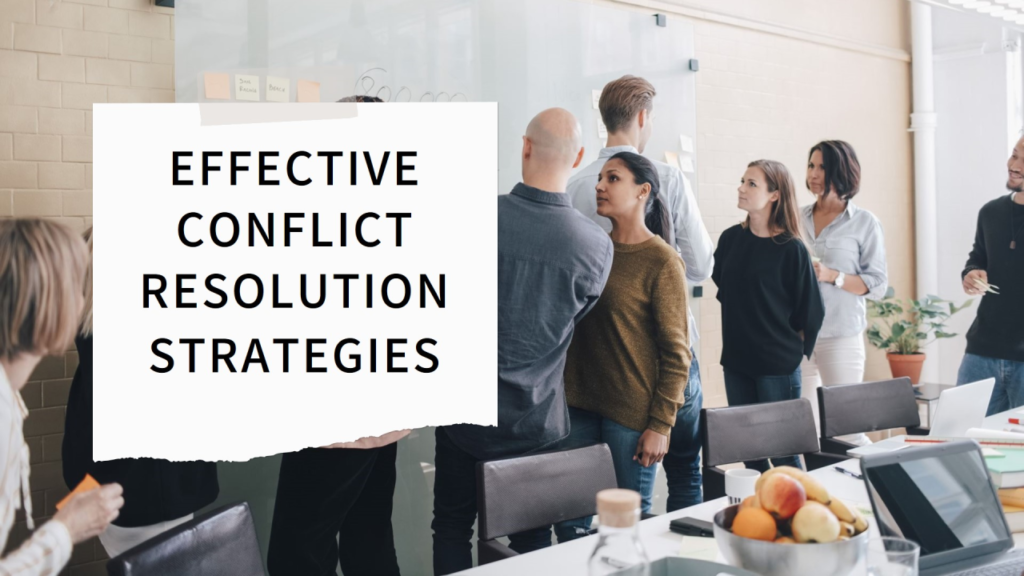Introduction
Conflict is a common part of any team project. Whenever people work together, disagreements and tensions can arise. Conflicts may come from differences in ideas, approaches, or personalities. While some conflict can spark creativity, too much can harm the team’s progress. This is why resolving conflict quickly and effectively is essential. Good conflict management helps maintain team harmony and ensures the project stays on track.
Sources of Conflict in Project Teams
There are many reasons conflict happens in project teams. One of the main sources is communication breakdown. When messages are unclear or misunderstood, confusion can occur. This can lead to frustration and errors. Another common cause is role ambiguity. When team members don’t have clear roles, they may step on each other’s toes. Competing for resources, like time and budget, can also create tension.
Additionally, personality clashes often lead to conflict, especially when people have different working styles or values. In some cases, the goals of individual team members may not align with the team’s or company’s overall objectives. In such cases, it’s important to rely on professional support. This is where the best project management services in FL can help teams ensure smoother workflows by defining roles, setting clear goals, and facilitating communication.
Conflict Resolution Models
Several models exist to help manage and resolve conflict in project teams. One widely used model is the Thomas-Kilmann Conflict Mode Instrument (TKI). It highlights five ways people handle conflict: competing, collaborating, compromising, avoiding, and accommodating. Each mode has its place, depending on the situation.
Another method is the Interest-Based Relational Approach (IBR). This model focuses on protecting relationships while resolving the issue. The goal is to solve the problem without damaging team bonds. Finally, the Six-Step Conflict Resolution Process is a structured approach that helps teams work through conflict. It involves defining the problem, identifying interests, generating and evaluating options, agreeing on a solution, and then implementing and monitoring that solution.
Techniques for Conflict Resolution
Several practical techniques can help resolve conflict within teams. The first is active listening. This means hearing what others are saying without interrupting or judging. It helps to understand all sides of the issue. Next is effective communication. Being clear and concise can prevent many conflicts from occurring. If misunderstandings happen, clear communication helps resolve them faster.
Sometimes, conflict needs a neutral party to step in. Mediation and facilitation involve a third party helping guide the discussion. Negotiation and compromise are also helpful. Finding a solution that works for everyone can keep the team moving forward. Collaboration and problem-solving ensure the team focuses on the root cause of the conflict, rather than just the symptoms. Finally, developing emotional intelligence can help team members manage their emotions and defuse tense situations.
Preventing Conflict in Project Teams
While it’s important to resolve conflict, it’s even better to prevent it from happening in the first place. Setting clear goals from the beginning is one way to do this. Everyone should know what the team is working towards. Another important step is clearly defining roles and responsibilities. When everyone knows their part, there is less chance for overlap and misunderstanding.
Effective leadership also plays a big role. A good leader fosters open communication and creates a positive team environment. This helps prevent many conflicts from arising. Team-building activities can improve relationships within the team, making it easier to resolve differences. Regular feedback sessions also ensure that small issues are addressed before they become big problems.
Case Studies or Examples
Real-world examples show how these techniques work. In one case, a team faced conflict over how to approach a task. By using collaboration and problem-solving techniques, they were able to combine their ideas and create a better solution than either had on their own. In another case, two team members had a personality clash. The team leader used mediation to help them find common ground and work together effectively.
Challenges in Conflict Resolution
Resolving conflict isn’t always easy. Some team members may resist change or compromise. This can make it difficult to move forward. Cultural and organizational differences can also complicate things. In teams with diverse backgrounds, misunderstandings may arise from differences in communication styles or expectations. Time constraints can also add pressure. When deadlines are tight, resolving conflicts quickly is essential, but it can be more challenging.
Conclusion
Managing conflict in project teams is a critical skill. By understanding the sources of conflict and using effective techniques, teams can keep their projects on track. Clear communication, strong leadership, and emotional intelligence all play key roles. By taking a proactive approach to conflict resolution, teams can maintain harmony and achieve their goals. Building a conflict-resilient team requires ongoing effort, but the results are worth it—stronger relationships, better project outcomes, and a more positive working environment.



More Stories
Automate Your Dental Clinic using Appointment Systems
Using a Virtual Office for Your GST Registration
Understanding KMSPico: A Comprehensive Overview